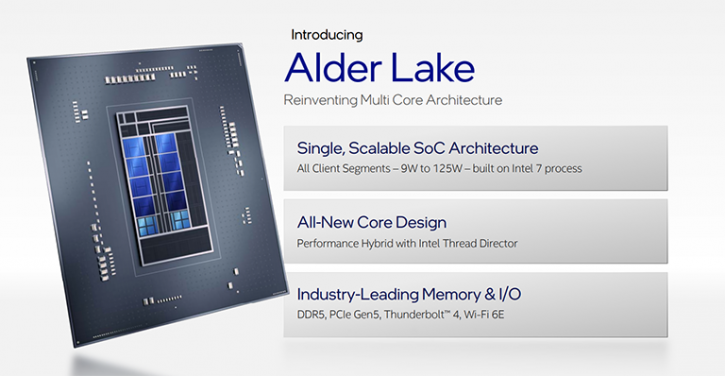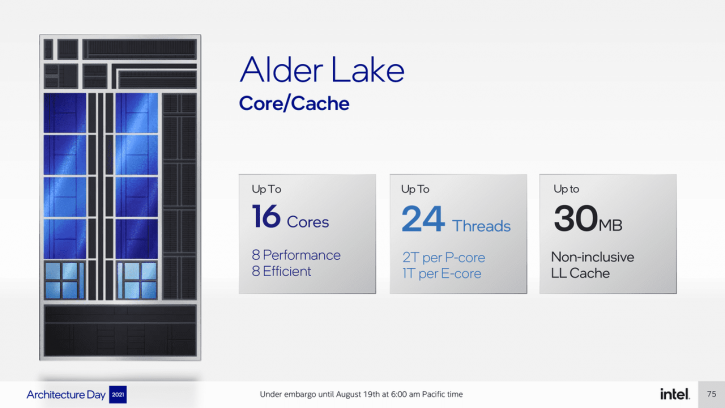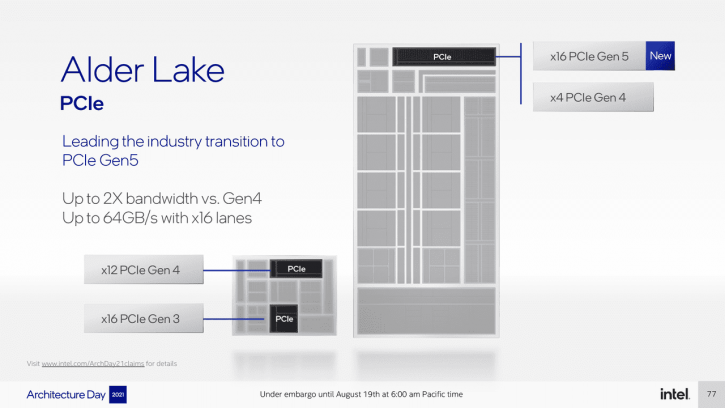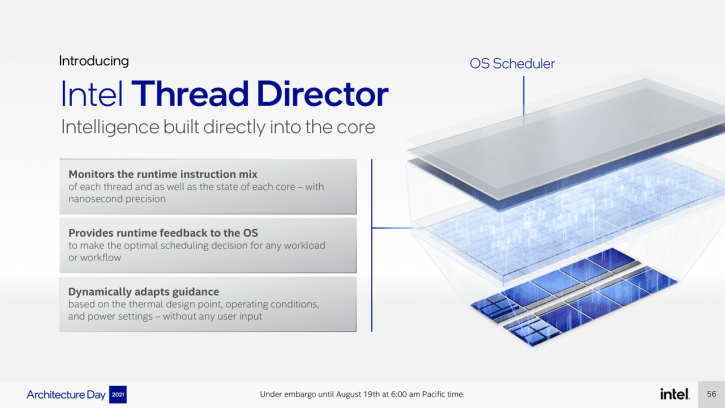Intel Architecture day 2021 page 1 - Alder Lake ()
Intel Architecture day 2021
Intel held their yearly Architecture day 2021 sharing loads of information on upcoming products like Alder Lake processors coming later this year, and Xe-based Alchemy GPU products coming in early 2021. In this article, we'll cover what you may expect for Alder lake, Xe Core-based GPUs in relation to architecture but also Intel's new DLSS equivalent, XeSS based on deep learning.
Alder Lake - a Hybrid Computing Architecture
It hasn't exactly been a secret that Intel has been putting in significant effort to re-take the CPU market. After numerous respins, it was time for a new architecture, created from the ground up with a hybrid design; meet Alder Lake, which you've probably already heard a lot about. They will also be the first to adopt a hybrid architecture, similar to ARM's BIG.little, that combines high-performance cores combined with efficient ones, making them the first of their kind for Intel. Furthermore, this new generation is now proven to be the first to support DDR5 memory (DDR4 compatible memory controllers as well) and PCI-Express 5.0, making it the first generation to do so.
Alder Lake-S will include 8 Golden Cove cores and 8 Gracemont cores, according to Intel, who verified this during the company's architecture day. It will be manufactured utilizing Intel's Intel 7 technology, which was previously known as the Intel 10 nm Enhanced SuperFin process. As previously stated, Alder Lake-S will have 8 Golden Cove cores, which are high-performance cores, and 8 Gracemont cores, which are high-efficiency cores. Due to the fact that Gracemont cores do not support Hyper-Threading (HT), Alder Lake-S will only be able to provide 16 cores and 24 threads, which is the same as the presumed i9-12900K configuration.
CPU
- Further information: Golden Cove (microarchitecture) and Gracemont (microarchitecture)
- Golden Cove high-performance CPU cores
- New instruction set extensions[6]
- Gracemont high-efficiency CPU cores
- Next-generation hardware scheduler; adding support for these advanced scheduling capabilities will require Microsoft to add support for them to x86-64 Windows.
GPU
- Intel Xe (Gen12.2) GPU
I/O
- New LGA 1700 socket[8]
- PCI Express 5.0
- DDR5 memory support for desktop CPUs
- LPDDR5 memory support for laptop CPUs
- DMI 4.0 x8 link with Intel 600 series PCH chipsets
Above you can see three markets differentiated versions of alder lake. For us, Guru's the most left one is the most important. It is possible to view the eight high-performance cores (golden cove) in dark blue, as well as the energy-efficient Gracemont cores, which are visible below them in light blue. The integrated graphics is based on Xe, and it has up to 96 EUs for the GPU and 32 EUs for media functions only, according to the manufacturer.
For a fully equipped processor, you'll receive eight performance cores as well as eight energy-efficient cores; the performance cores have SMT (hyper-threading), which means you'll end up with a total of 24 CPU threads. In the following chapters, we'll dive into greater depth about architecture.
The Memory subsystem and PCI_Express 5.0
The memory subsystem, which is DDR4 and DRR5 compatible, has a large amount of transistor real estate Intel clearly invested heavily in it.
Intel continues to list memory at the JEDEC specification level, implying that it is unable to go any further. DDR4 memory operates at 3200 MHz, while DDR5 memory operates at 4800 MHz by default. You can already see that the memory bandwidth is likely to rise dramatically with DDR5 technology.
|
PCIe Gen |
Line Code |
Transfer Rate |
x1 Bandwidth |
x4 |
x8 |
x16 |
|
1.0 |
8b/10b |
2.5 GT/s |
250 MB/s |
1 GB/s |
2 GB/s |
4 GB/s |
|
2.0 |
8b/10b |
5 GT/s |
500 MB/s |
2 GB/s |
4 GB/s |
8 GB/s |
|
3.0 |
128b/130b |
8 GT/s |
1 GB/s |
4 GB/s |
8 GB/s |
16 GB/s |
|
4.0 |
128b/130b |
16 GT/s |
2 GB/s |
8 GB/s |
16 GB/s |
32 GB/s |
|
5.0 |
128b/130b |
32 GT/s |
4 GB/s |
16 GB/s |
32 GB/s |
64 GB/s |
It has now been verified that Alder Lake will enable PCI Express 5.0, which will more than double the bandwidth available from Gen 4, reaching a whopping 64 GB/s over 16 lanes, as predicted by rumors and now confirmed by Intel. Comparatively, PCIe Gen 3.0 (which is fast) can carry 16 GB/s across 16 lanes. Interconnects will be required to connect everything together. AMD refers to this as the infinity fabric, whereas Intel refers to it as the compute fabric; two distinct names for the same concept.
Windows 11 and software schedulers: Intel Thread Director
In an effort to enhance performance while utilizing the least amount of energy, it is reasonable to assume that background operations will be performed on efficient cores and that highly utilized performance cores will be used for gaming and other applications such as video editing and editing. Alder Lake would be an excellent companion for Windows 11, which includes an efficient thread scheduler on the basis of which Intel has collaborated extensively with Microsoft for several years. Intel has stated that this lga1700 socket processor family will be released in the second half of this year. We anticipate that Windows 10 will function effectively with Alder Lake after some updates; however, Windows 11 may be more efficiently tuned in terms of thread scheduling in respect to workloads than Windows 10. The software implementation of the Hybrid Architecture was perhaps the most difficult aspect of the project. Until recently, the possibilities for intelligent job assignment to different types of cores were severely constrained. It was one of the few data points available to determine whether a process was operating in the foreground or the background; an intensive game will run on the fast cores, while a background task such as email synchronization will run on the frugal cores;
This approach, however, requires more data to be applied on a broad scale in order to be able to make the most efficient decisions at all times, even in increasingly complex situations. Intel has created a hardware scheduler called the thread director, on its end it monitors the instruction mix of all current runtimes and sends input to the operating system. The software scheduler in Windows 11 is capable of interpreting this feedback and assigning the most appropriate processes to each type of core on a continuous basis.
On the next pages, we'll delve a little more into the architecture of the CPU cores (yes pleural these days).







